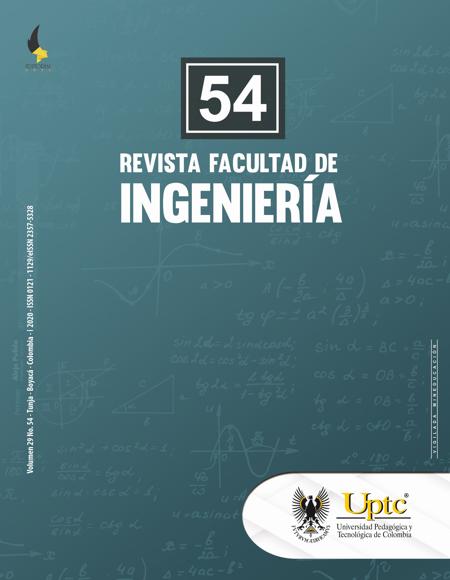Assessment of Geotechnical Hazard due to Deep Excavations in Bogota Clays: A Contribution for Sustainability in Urban Environments

Abstract
The development of resilient and sustainable cities considers the construction of infrastructure projects that involve deep excavations. During excavations, surface displacements frequently occur that may be inadmissible for previously constructed elements of the urban environment, threatening the sustainability of already consolidated sectors. In this article, we present an approximation to the estimation of the geotechnical hazard by deep excavations in soft lacustrine soils of Bogotá, DC, using parametric numerical simulations that sought to establish the probability of occurrence of base bottom heave, and the estimation of surface displacements for variable excavation geometries. A database was consolidated from 85 projects found in geotechnical zones having soft soils in the city. From this base, statistically representative values of shear strength and stiffness were determined, and a statistically representative geotechnical profile of the lacustrine clays was prepared for parametric analyzes. The hazard estimation was developed in three stages: construction of the geotechnical model, approach of hazard scenarios and determination of the hazard level. The following parameters were considered: excavation geometry (base and height), safety factor, failure probability and vertical ground displacements (settlements). Finally, a matrix is presented to determine the hazard level by excavations in the soft soils of Bogotá, whose data provide a prior assessment that contributes to promoting resilience and sustainability of already developed areas.
Keywords
angular distortion, bottom heave, deep excavations, failure probability, geotechnical hazard, ground settlements, lacustrine soils, safety factor, soft clays, subsidence
Author Biography
Jorge Arturo Pineda-Jaimes, Ph. D.
ROLES: Conceptualización, Curación de Datos, Análisis Formal, Investigación, Escritura, revisión y edición del texto.
Cesar Augusto García-Ubaque, Ph. D.
ROLES: Investigación, Supervisión, Metodología, Validación, Escritura, revisión y edición del texto.
Rodrigo Elías Esquivel-Ramírez, M.Sc. (c)
ROLES: Investigación, Supervisión, Metodología, Validación, Escritura, revisión y edición del texto.
References
- D. Basu, A. Misra, and A. J. Puppala, “Sustainability and geotechnical engineering: perspectives and review,” Canadian Geotechnical Journal, vol. 52 (1), pp. 96-113, 2015. https://doi.org/10.1139/cgj-2013-0120 DOI: https://doi.org/10.1139/cgj-2013-0120
- D. Basu, and A. J. Puppala, “Principles of Sustainability and Their Applications in Geotechnical Engineering,” Advances in Soil Mechanics and Geotechnical Engineering, vol. 5, pp. 162-183, 2015. https://doi.org/10.3233/978-1-61499-599-9-162
- M. Lee, Resilience assessment in geotechnical engineering, Doctoral Thesis, University of Waterloo, Waterloo, Belgium, 2016.
- D. G. A. Holt, Sustanaible assessment for geotechnical projects, Doctoral Thesis, University of Birmingham, Birmingham, United Kingdom, 2010.
- S. Larrañaga, and J. A. Pineda, “Análisis simplificado de la ocurrencia de falla de fondo en la ejecución de excavaciones para sótanos en suelos blandos de Bogotá, D.C.,” in XII Jornadas Geotécnicas de la Ingeniería Colombiana, Sociedad Colombiana de Ingenieros, Bucaramanga, Colombia, 2003.
- C. Sainea, and M. C. Torres, “Selección de parámetros para análisis numéricos y probabilísticos de excavaciones,” in International Especialiced Conference on Soft Rocks, Cartagena, Colombia, 2016.
- S. Larrañaga, and J. A. Pineda, Elementos para la Estimación de la Amenaza por Excavaciones en Bogotá D.C., Madrid, Spain: CIDIS-Research Center for Sustainable Engineering, 2019.
- J. Martinez, and B. Páez, “Análisis probabilístico de la falla de fondo en excavaciones urbanas en los suelos blandos de Bogotá D.C. y sus implicaciones en la amenaza por desplazamientos en elementos de la infraestructura vial urbana,” Masther Thesis, Universidad Santo Tomás, Bogotá D.C., Colombia, 2019.
- C. J. Sainea-Vargas, and M. C. Torres-Suárez, “Damage probability assessment for adjoining buildings to deep excavations in soft soils,” International Journal Geotechnical. Engineering, vol. 2019, pp. 1-16, 2019. https://doi.org/10.1080/19386362.2019.1680486 DOI: https://doi.org/10.1080/19386362.2019.1680486
- S. Tangchawal, “Reliabity and assessment techniques on ground excavation,” Engineering Journal., vol. 13 (2), pp. 1-8, 2009. https://doi.org/10.4186/ej.2009.13.2.1 DOI: https://doi.org/10.4186/ej.2009.13.2.1
- S. S. Chowdhury, “Reliability Analysis of Excavation Induced Basal Heave,” International Journal Geotechnical. Engineering, vol. 35 (6), pp. 2705-2714, 2017. https://doi.org/10.1007/s10706-017-0272-2 DOI: https://doi.org/10.1007/s10706-017-0272-2
- Geotechnical Control, QRA of Collapse and Excessive Displacements of Deeo Excavations, Hong Kong, 1999.
- M. Korf, Deformations and damage to buildings adjacent to deep excavations in soft soils, Amsterdam: Delf Cluster, 2009.
- D. D'Ayala, “Assessment of the settlement vulnerability of masonry buildings,” in Handbook of Seismic Risk Analysis and Management of Civil Infrastructure Systems, S. Tesfamariam, K. Goda (eds.), Cambridge, United Kingdom: Woodhead Publishing, pp. 334-365, 2013. https://doi.org/10.1533/9780857098986.3.334 DOI: https://doi.org/10.1533/9780857098986.3.334
- Z. Luo, and B. M. Das, “System probabilistic serviceability assessment of braced excavations in clays,” International Journal of Geotechnical Engineering, vol. 10 (2), pp. 135-144, 2016. https://doi.org/10.1179/1939787915Y.0000000021 DOI: https://doi.org/10.1179/1939787915Y.0000000021
- G. Giardina, V. Floria, M. A. N. Hendriks, and J. G. Rots, “Vulnerability assessment of buildings subject to tunnel-induced settlements: the influence of orientation and position of the building,” in World Tunnel Congress, pp. 1-8, 2012.
- H. G. Poulos, R. P. Cunha, and H. G. Poulos, “Importance of the Excavation Level on the Prediction of the Settlement Pattern from Piled Raft Analyses,” Soils and Rocks, vol. 41 (1), pp. 91-99, Apr. 2018. https://doi.org/10.28927/SR.411091 DOI: https://doi.org/10.28927/SR.411091
- G. B. Baecher, and J. T. Christian, Reliability and Statistics in Geotechnical Engineering, United Kingdom: Wiley, 2003.
- D. Peduto, M. Korff, G. Nicodemo, A. Marchese, and S. Ferlisi, “Empirical fragility curves for settlement-affected buildings: Analysis of different intensity parameters for seven hundred masonry buildings in The Netherlands,” Soils and Foundarions, vol. 59 (2), pp. 380-397, Apr. 2019. https://doi.org/10.1016/j.sandf.2018.12.009 DOI: https://doi.org/10.1016/j.sandf.2018.12.009
- S. Rozo-Rincón, J. Sánchez-Molina, and J. Gelves-Díaz, “Evaluación de minerales alumino silicatos de Norte de Santander para fabricar piezas cerámicas de gran formato,” Revista Facultad de Ingeniería, vol. 24 (38), pp. 53-61, 2015. https://doi.org/10.19053/01211129.3158 DOI: https://doi.org/10.19053/01211129.3158